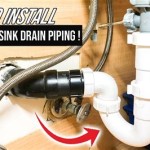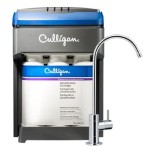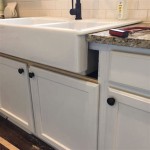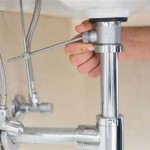Dehumidifiers That Drain Into Sink
High humidity levels within a home can lead to a variety of issues, including mold growth, musty odors, and damage to furniture and belongings. A dehumidifier effectively reduces excess moisture, creating a healthier and more comfortable living environment. While many dehumidifiers collect water in a built-in reservoir that requires manual emptying, models that drain directly into a sink offer a convenient, hands-free solution for moisture control.
Gravity-Fed Drainage Systems
Dehumidifiers that drain into a sink typically utilize a gravity-fed system. This involves connecting a drainage hose to the dehumidifier's designated outlet and routing it to a nearby sink. Gravity allows the collected water to flow down the hose and directly into the drain. This eliminates the need to regularly empty a collection tank, making these dehumidifiers ideal for areas with consistently high humidity or for individuals seeking a low-maintenance solution.
Effective gravity drainage relies on proper hose placement. The hose should maintain a downward slope from the dehumidifier to the sink to prevent water from pooling and potentially causing blockages or leaks. Most dehumidifiers compatible with sink drainage come with a drainage hose, though it's important to verify the hose length is sufficient to reach the intended sink. Adapters and extension hoses may be purchased separately if needed.
Choosing the Right Dehumidifier for Sink Drainage
Several factors should be considered when selecting a dehumidifier that drains into a sink. The dehumidifier's capacity, measured in pints per day, should align with the size of the space and the severity of the humidity problem. Larger spaces or areas with persistent dampness will require a higher capacity unit. Energy efficiency is another important consideration. Look for models with an Energy Star rating to minimize operating costs.
The physical placement of the dehumidifier and the sink is also crucial. The sink must be within reach of the drainage hose, and there should be a clear path for the hose to run without creating tripping hazards. Some dehumidifiers offer built-in pumps that assist with drainage, allowing for greater flexibility in placement even if the sink isn't directly below the unit. However, these models often come with a higher price tag.
Installation and Maintenance of Sink Draining Dehumidifiers
Installing a dehumidifier with sink drainage is typically straightforward. After positioning the unit in the desired location, attach the provided drainage hose to the designated outlet on the back of the dehumidifier. Ensure the connection is secure to prevent leaks. Then, route the hose to the nearby sink, making sure it maintains a consistent downward slope. The end of the hose can be placed directly into the sink drain or secured with a clip or adapter to prevent it from slipping out.
Regular maintenance is essential for optimal performance and longevity. This includes cleaning or replacing the air filter according to the manufacturer's instructions, typically every few months. The drainage hose should also be checked periodically for clogs or kinks. Flushing the hose with clean water can help prevent buildup. Additionally, the dehumidifier's coils may require occasional cleaning to remove dust and debris that can impede their effectiveness.
Alternative Drainage Solutions
While draining directly into a sink is a popular and convenient option, other drainage methods exist for dehumidifiers. Some models offer the possibility of connecting to a condensate pump, which can pump the collected water vertically or horizontally to a more distant drain or even outdoors. This provides greater flexibility in dehumidifier placement, particularly in basements or crawl spaces where a sink may not be readily accessible.
Another alternative is the use of a larger external collection container. While this requires periodic emptying, it eliminates the need for a nearby sink or a condensate pump. Choosing the right drainage method depends on individual needs and the specific characteristics of the space where the dehumidifier will be used.
Safety Considerations
When using any electrical appliance, safety should be a primary concern. Ensure the dehumidifier is plugged into a properly grounded outlet and avoid using extension cords whenever possible. Inspect the power cord regularly for damage and discontinue use if any fraying or cracks are observed. It is also advisable to place the dehumidifier on a level surface away from flammable materials. Never attempt to repair the dehumidifier yourself. Contact a qualified technician for any necessary repairs.

How To Drain Your Dehumidifier Sylvane

How To Drain Your Dehumidifier Sylvane

Honeywell Tp70pwkn 50 Pint 70 2024 Doe Standard Energy Star Dehumidifier With Pump White

Idylis 70 Pint 3 Speed Dehumidifier With Built In Pump For Rooms 1501 3000 Sq Ft At Com

How To Drain Your Dehumidifier Sylvane

The 3 Best Dehumidifiers Of 2025 Reviews By Wirecutter

Honeywell Tpfit50pwk 50 Pint Energy Star Portable Dehumidifier With Pump White

How To Drain A Dehumidifier Knowledge Center

The 3 Best Dehumidifiers Of 2025 Reviews By Wirecutter

13 Pint Dehumidifier With Continuous Drain Hose Ivation S







